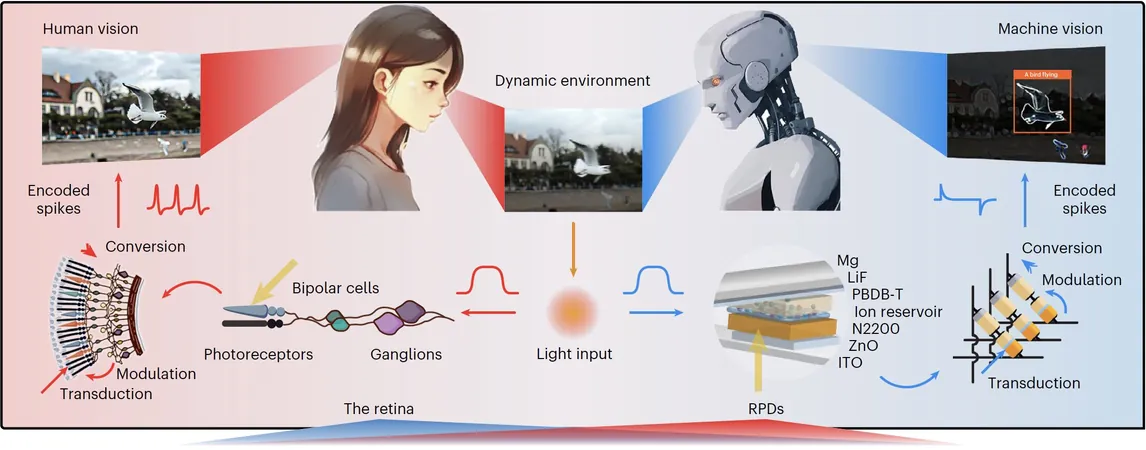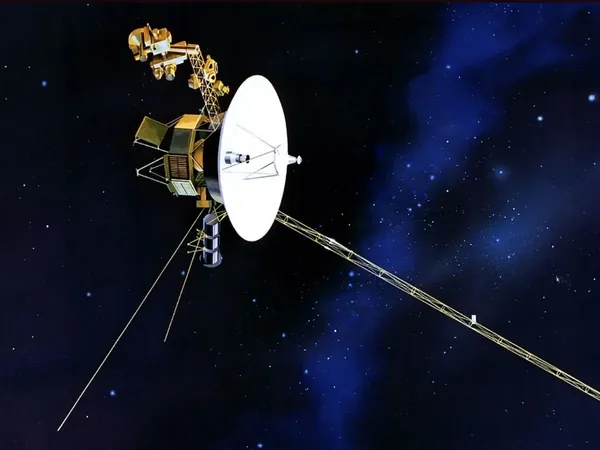
Revolutionary Retina-Inspired Photodiodes Set to Transform Machine Vision
2025-08-27
Author: Rajesh
A Leap Forward in Machine Vision Technology
In the ever-evolving realm of technology, machine vision stands out as a game-changer, enabling systems to analyze images and videos with exceptional precision. From manufacturing food and beverages to electronics, this advanced capability is reshaping various industries.
Elevating Automation in Industry
Imagine automating tedious industrial tasks: spotting defects, inspecting components, verifying labels, and sorting products with ease. This is the promise of machine vision, yet traditional sensors often fall short, lacking the intricacy of the human retina, the biological marvel that interprets visual inputs with incredible detail.
The Shortcomings of Current Sensors
Existing sensors operate on frame-based or event-based systems—capturing images at set intervals or recording pixel brightness changes respectively. Nevertheless, neither approach rivals the speed and adaptability of the human eye, limiting their effectiveness.
Introducing a Retina-Inspired Design
A groundbreaking solution has emerged from researchers at the Chinese Academy of Sciences and the Sino-Danish Center for Education and Research. In their recent study published in Nature Nanotechnology, they unveiled a revolutionary device: the retinomorphic photodiode (RPD). This innovative sensor mimics the layered architecture of the human retina to enhance machine vision.
How the RPD Works
The RPD consists of three vital components: an organic donor-acceptor heterojunction, a porous ion reservoir, and a Schottky junction—each meticulously designed to replicate retinal functions. The heterojunction facilitates charge transfer, the ion reservoir acts like a biological sponge storing and releasing ions, and the Schottky junction ensures seamless current flow.
Unmatched Performance and Potential
The team behind the RPD asserts that this design delivers a dynamic range that surpasses 200 dB, significantly reduces noise, and diminishes data redundancy. In preliminary tests, the RPD has shown outstanding results, outpacing traditional photodiodes in diverse machine vision tasks. This breakthrough could lead to further enhancements, paving the way for real-world application across various sectors.
A New Era for Machine Vision Systems
In conclusion, this cutting-edge research highlights a novel approach to creating retinomorphic sensors, poised to revolutionize machine vision systems. By adapting to complex lighting conditions, these advanced devices could usher in an era of highly efficient, robust, and responsive vision technology.



 Brasil (PT)
Brasil (PT)
 Canada (EN)
Canada (EN)
 Chile (ES)
Chile (ES)
 Česko (CS)
Česko (CS)
 대한민국 (KO)
대한민국 (KO)
 España (ES)
España (ES)
 France (FR)
France (FR)
 Hong Kong (EN)
Hong Kong (EN)
 Italia (IT)
Italia (IT)
 日本 (JA)
日本 (JA)
 Magyarország (HU)
Magyarország (HU)
 Norge (NO)
Norge (NO)
 Polska (PL)
Polska (PL)
 Schweiz (DE)
Schweiz (DE)
 Singapore (EN)
Singapore (EN)
 Sverige (SV)
Sverige (SV)
 Suomi (FI)
Suomi (FI)
 Türkiye (TR)
Türkiye (TR)
 الإمارات العربية المتحدة (AR)
الإمارات العربية المتحدة (AR)